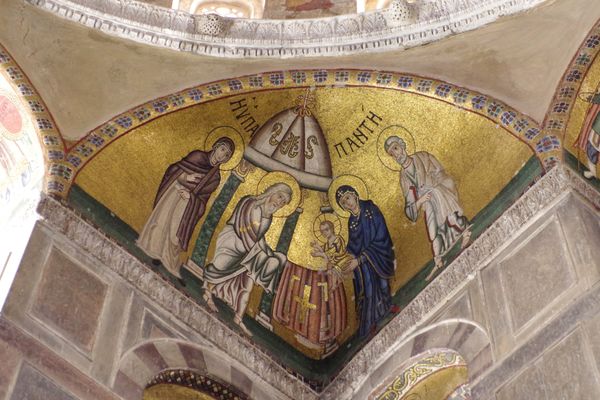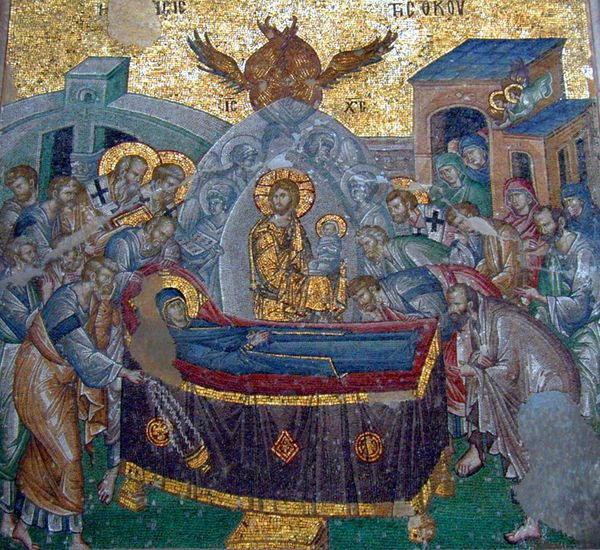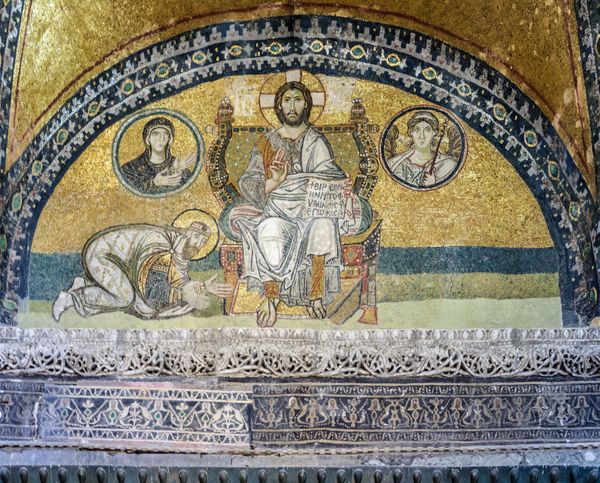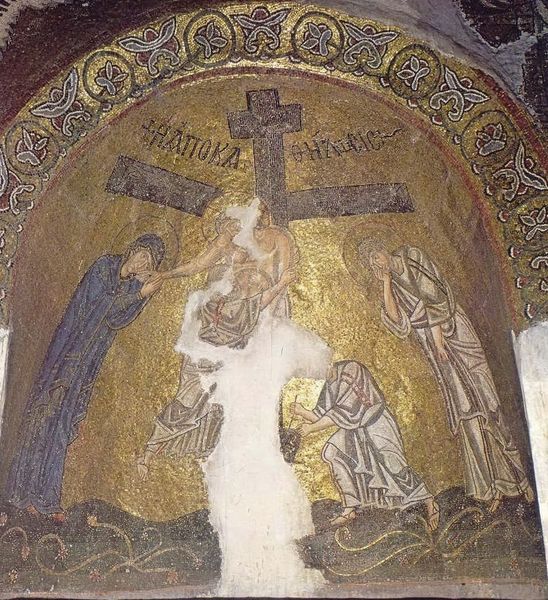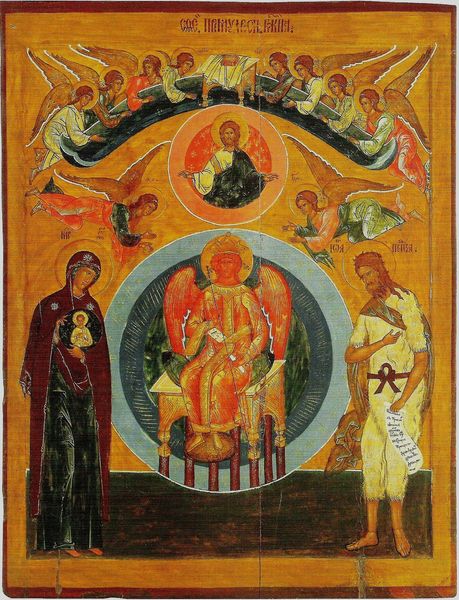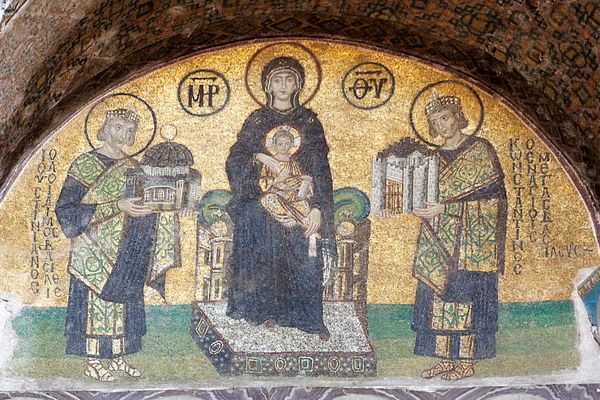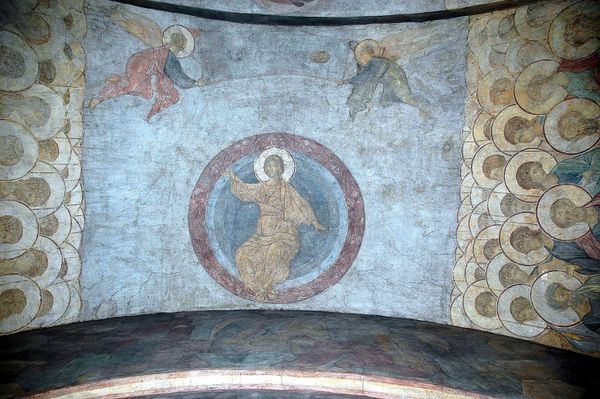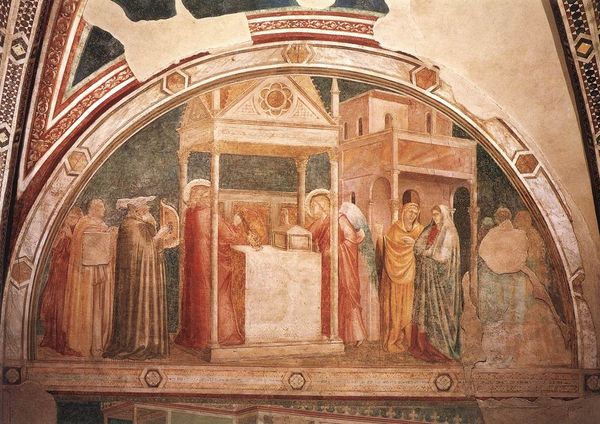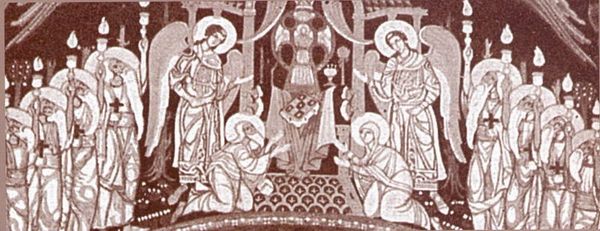
mosaic, tempera, painting, architecture
#
mosaic
#
byzantine-art
#
narrative-art
#
tempera
#
painting
#
holy-places
#
painted
#
figuration
#
arch
#
architecture
Copyright: Public domain
Curator: Let’s take a moment to examine this remarkable mosaic, titled "Baptism," created around 1056. It is one of several that adorn the Nea Moni monastery on the island of Chios, Greece. The meticulous use of tesserae in tempera to create this work offers rich insights into the artistic, religious, and socio-political contexts of the Byzantine era. Editor: My first thought? Whoa, it’s like a shimmer! The gold background is doing this crazy dance. The colors are surprisingly muted for a religious scene—it makes it feel contemplative, almost hushed, you know? I just want to run my hands over it—I wonder if the artists felt the same when they were laying down all these little pieces. Curator: The very placement of this mosaic, high up in the dome of the church, was no accident. Consider the narrative carefully depicted—John the Baptist is shown here baptizing Jesus in the river Jordan. We are positioned as observers to a pivotal moment in Christian theology; Jesus’s acknowledgment by God, marked by the descending dove of the Holy Spirit. The spatial dynamics invite us into the unfolding divine revelation. Editor: Yeah, I see it. And the stylized water—those perfect, neat lines rippling from Jesus, kind of…calming. But there's this interesting flatness. Like, everyone’s important, and their emotional presence is not as foregrounded compared to what the artist had intended in representing divinity made physical. It’s fascinating. Curator: Absolutely. That flattening also relates to Byzantine conventions of depicting divinity. Figures are idealized, monumental, conveying a sense of awe rather than raw emotion. Think about how this intersects with the prevalent societal hierarchies. In the 11th century Byzantine world, the artwork served to communicate the unshakable divine mandate and celestial endorsement of the emperor, whose power, in turn, permeated the everyday experiences of the people. Editor: You're so right! All of it is incredibly connected: religion, power, art! So even these small golden cubes represent a bigger world that I initially perceived when noticing a certain color composition. This piece just grew in meaning and resonance in just a few minutes. Thanks for this amazing overview!
Comments
No comments
Be the first to comment and join the conversation on the ultimate creative platform.

